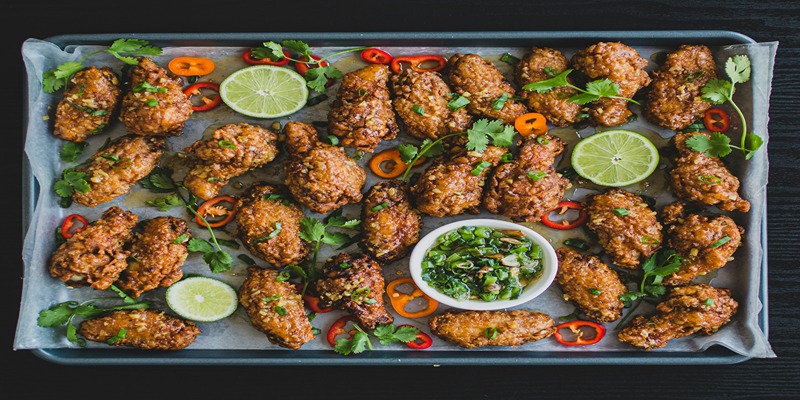Despite the fact that frying is a common cooking technique in many cuisines throughout the world, its effect on calorie content is frequently disregarded. Submerging food in hot oil when frying can drastically change its nutritional composition. If you want to make smart food choices, you need to know how frying changes the calorie count. In this article, we will go into the topic of how frying alters the calorie content of food. Investigating the inner workings of this cooking technique can shed light on its role in total calorie consumption and its nutritional and health effects.

Understanding Frying Calorie Increase
Basic Principles of Frying and Calorie Addition
The process of frying, which entails placing food in heated oil, considerably raises the calorie count. Frying food causes it to soak in oil, which in turn increases the calorie content. The calorie gain is directly proportional to the oil's absorption rate. Foods lose moisture when fried, which increases their calorie density. More oil is absorbed and calories are added when frying for longer periods of time, which is influenced by both the temperature and the length of frying. Fried foods have a higher energy density than their raw equivalents because of these fundamental changes to their calorie content.
Comparing Caloric Differences: Fried vs. Other Cooking Methods
When compared to the same items cooked in other ways, the calorie content of fried dishes is often greater. The calorie-dense oil is absorbed by food during frying. Baking, steaming, or grilling, on the other hand, usually call for minimal or no additional fats, which means less calories. Fried chicken breast, for instance, has more calories than baked or grilled chicken breast. In order to make educated nutritional decisions and control calorie consumption, it is vital to understand these calorie variations between frying and other cooking techniques.
Nutritional Impact of Frying on Food
Nutrient Alterations Due to Frying
A food's nutritional profile can change drastically when fried. Frying at high temperatures can destroy vitamins and antioxidants, which are nutrients that are sensitive to heat. On top of that, there are several substances that can arise from extended contact with oil and heat that are known to be hazardous to health, such as acrylamide and trans fats. However, because of the extra oil, frying can improve the absorption of some nutrients, making them more bioavailable. This is especially true for fat-soluble vitamins. Nevertheless, it is crucial to think about different ways of cooking in order to keep the nutritional value of food, because of the total loss of nutrients and the possible creation of hazardous substances.

Health Implications of Increased Caloric Intake
Meal that contains fried foods can surreptitiously add many more calories potentially leading to heightened chances of poor health. The main culprits are usually unhealthy frying methods that use lots of bad fats, for example, saturated and trans fats, which then boost LDL cholesterol levels and put you at heart disease risk. Fried Foods are bad for health and very high in calories, thats why we need to avoid major consumption of those unhealthy snacks. In an attempt to cut down the hazards to as minimal extent possible and general health improvement, employ cleaner methods of cooking and avoid fried foods.
Cooking Methods: Frying vs. Healthier Alternatives
Frying Compared to Baking, Steaming, and Grilling
If we put frying on the scale while healthy procedures such as baking, steaming or grilling are on the other side, frying has the advantage due to adding a lot of calories. These methods together do not contain as many calories as frying does. This is because frying food is deeply immersed in oil. Similarly, for instance, bake may substitute for frying, which is due to bake being made using dry heat so it's has lesser calories. Grilling and steaming of the foods will save the meals from the effects of deep frying that inadvertently reduce vitamins content. Such options of frying are a beauty for consumers so they can lose in calories unknowingly without forsaking flavor and nutrition.
Making Healthier Cooking Choices
To ensure we practice the art of healthy food making we must desist from cooking methods that maximize nutrient levels but increase the number of calories. Try using of baking, steaming or grilling to help your food be delicious As well as healthy and most importantly not to have additional calories. Moreover, roasting or broiling could be good options for frying as they may deliver the same results but with less grease point. Besides, you might make your meal more delicious by cutting down the fats without working so hard with just adding the heat, salt, very few herbs and spices, and citrus liquids. There are a few ways individuals may enjoy their food without achieving a negative impact on their health, specifically by using healthier methods of cooking their meals.
Analyzing Popular Fried Foods and Their Caloric Content
The calorie value of popular fried dishes varies greatly. A medium portion of French fries, a fast food mainstay, can have 300 to 400 calories, while the calorie count of a single fried chicken breast can vary from 250 to 400, depending on its size and cooking method. The caloric content of onion rings, which are commonly prepared by frying onion slices in batter until they turn a golden brown color, can range from two hundred to four hundred calories per serving. Also, depending on the type of fish and how it is prepared, a serving of breadcrumb or batter-coated, deep-fried shrimp or fish might have anywhere from 200 to 400 calories. These examples highlight the significance of knowing how many calories are in popular fried meals so that one may make educated dietary decisions that support their health.
Conclusion
If you want to make smart food choices, you need to know how much fat is added when you fry meals. Think about healthier cooking methods like baking, steaming, or grilling instead of frying, which greatly increases the calorie content because of the oil absorption. We can learn to eat more moderately by looking at the nutritional profiles of common fried meals and seeing the huge variety in calorie counts. In order to eat healthily and maintain a balanced diet, it is important to make deliberate decisions about cooking techniques and serving amounts.







